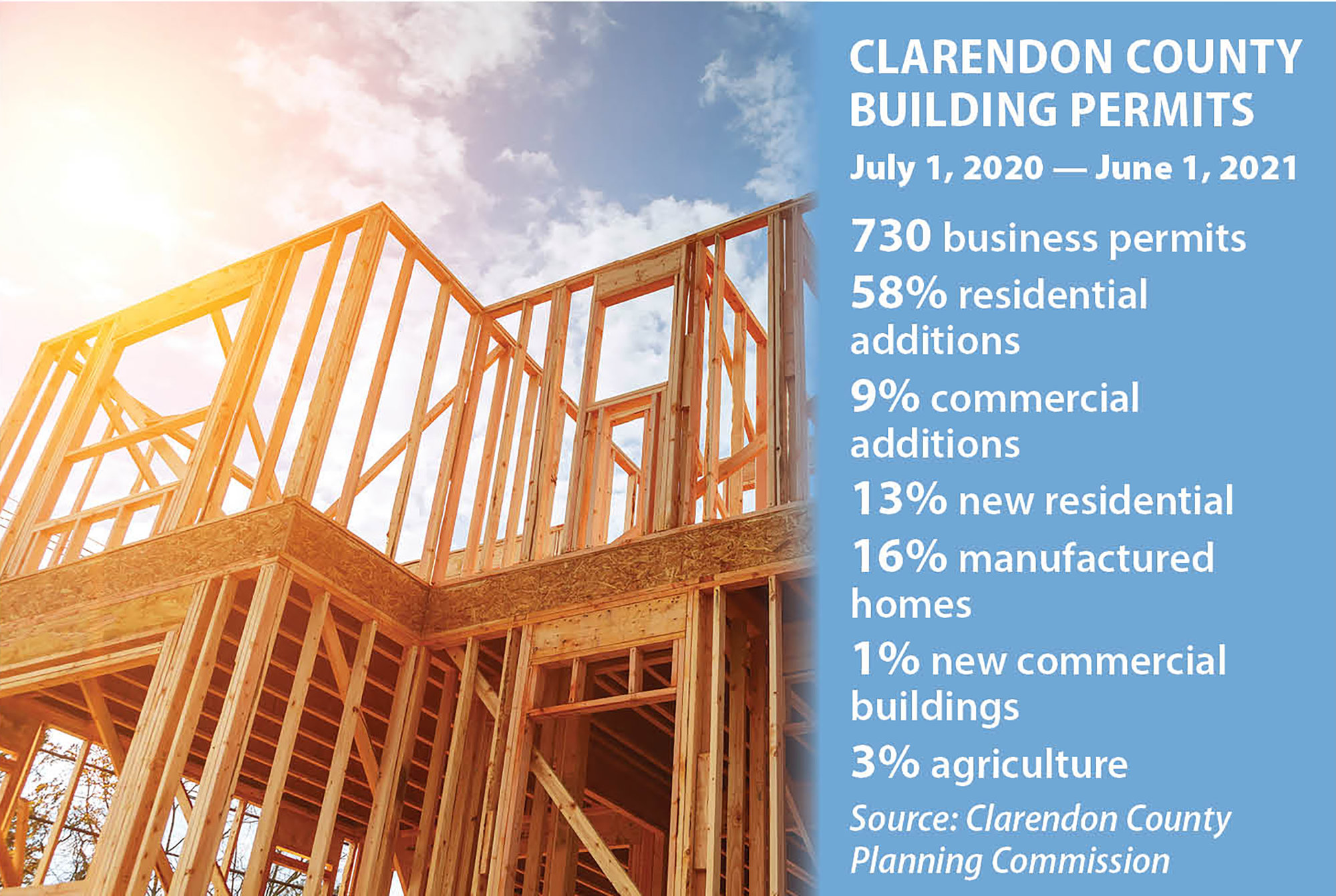Clarendon sees surge in business, residential permits in pandemic
kareem@theitem.com
Despite the devastating effects of the coronavirus pandemic on the U.S. economy, Clarendon County has shown major growth development with an upward trend in building permits from the past year.
A new report illustrated that Clarendon County gradually recovered from the pandemic with a recent significant growth in overall building permits being distributed throughout the county between July 1, 2020, to June 1, 2021.
"We've been extremely busy this past year, and it has been a much more than normal activity in the residential construction," said Maria Rose, director of planning for Clarendon County.
The planning commission issued 730 business permits, with 58% being residential additions, 9% being commercial additions, 13% being new residential, 16% being manufactured homes, 1% being new commercial buildings and 3% being agriculture in fiscal year 2021, according to Rose, who broke the figures down to Clarendon County Council on Oct. 11.
The Sumter Item asked about a comparison from pre-pandemic years, but Rose said they do not have a complete comparison because the planning commission changed to a fiscal year budget to calculate this year's figures.
The commission usually worked on a calendar year budget, which ran from Jan. 1 to Dec. 31, but it transitioned to a fiscal year budget to match the county's operating fiscal year budget during the pandemic, which runs from July 1, 2020, to June 1, 2021.
However, Rose estimated that the commission distributed between 600-675 business permits in previous years and said they are currently dealing with the aftermath of this increase in permits, especially for residential homes.
Clarendon was one of a few dozen counties in the Palmetto State that experienced an influx of building permits because of Americans moving to South Carolina and other Southern and Western states last year amid the pandemic, which influenced the moving decision, according to Rose.
A combination of factors, including concerns for personal and family health, a change in work arrangements, the state's warmer climate and lake areas and cost of living with historically low interest rates played a role in people retiring and settling in the South, Rose said. This also drove people to Clarendon County.
She observed that the majority of people who moved to the county and South Carolina are older adults and retirees looking to move away from the urban environment.
According to data from a 2020 study by United Van Lines, 34.57% of customers aged 65 or older and 34.26% of customers aged 55 to 64 moved to South Carolina.
"I think that people who have been putting off retirement have decided to retire, mostly people from the North, and come down here to the South where it's not as crowded," Rose said.
She also said it was no surprise that many retirees wanted to live next to the lake areas because of the tranquil lifestyle.
One thing that did surprise Rose was that they saw many in-state residents move from Charleston to Clarendon County and cited overcrowding and traffic as factors in their move.
"A lot of people have said that they can live here and drive to Charleston for work in the same amount of time that they can live in Charleston and drive to work," Rose said.
The county also experienced an increase in the commercial and industrial sectors with several companies such as Loctek, F. Hunt, Westinghouse Electric Co., On Time Distributions, Palmetto Yacht Management and a new nursing home coming to the area.
Rose said the construction of these new companies led to more permits, more than $34.8 million invested in the county and 350 new jobs, all of which boosted the economic development in Clarendon County.
As of Oct. 11, the commission had more than 1,200 open building permits in the county with this figure changing daily, Rose said. Since mid-October, they've issued and conducted about 1,620 inspections.
During the past three months, the commission issued 238 permits with 65 issued in July, 78 issued in August and 95 issued in September. The commission and local officials hope this trend will continue growing and see more permits being issued in the next fiscal year.
More Articles to Read

